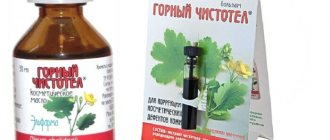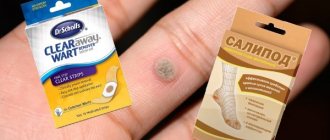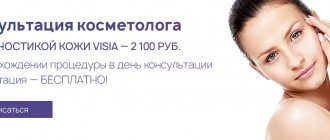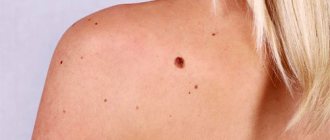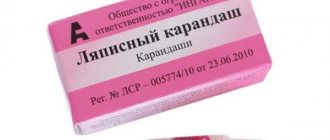Table of contents
- Where do they come from: warts, papillomas, condylomas?
- What is celandine as a plant?
- Chemical composition and therapeutic effect of celandine
- How does celandine work against warts, papillomas and condylomas?
- How to collect and prepare celandine?
- Other useful uses of celandine
- General contraindications to the use of celandine:
In Ancient Greece, this plant was nicknamed swallow grass, since it bloomed simultaneously with the return of birds from warm regions, and faded with their departure. This herb began to be called “celandine” in Russia. The fact is that the juice of the plant does an excellent job of cleansing the skin of various age spots, acne, lichen, as well as warts, papillomas and condylomas.
Where do they come from: warts, papillomas, condylomas?
First, it must be said that the occurrence of all these neoplasms on the skin or mucous membranes has no connection with human age. Children, teenagers, and adults often face this problem. The fact is that warts, papillomas and condylomas are neoplasms of an infectious nature that belong to the Human Papillomavirus (HPV) family of papillomaviruses. Like any other virus or group of viruses, the human papillomavirus, HPV (this is its other name) “loves” a weakened immune system. As soon as our immunity “gives up”, it is, as they say, right there. HPV is transmitted from person to person through direct contact, through shared household items, during sexual intercourse, during childbirth and under other circumstances. The appearance of such neoplasms is often associated with neglect of personal hygiene rules.
Warts, papillomas and condylomas are predominantly benign neoplasms. However, there are different types of papillomaviruses that can cause malignant neoplasms of low and high oncogenic risk, so before starting to use celandine, we must be sure of what we are getting rid of. You need to delete “good” forms in any case, because Over time, they can become malignant, especially if they are injured, squeezed, irritated, etc.
Warts, papillomas and condylomas differ in appearance and location.
Review of wart removal products: composition
I will not write the trade names of the drugs, I will simply list the active ingredients often found in their compositions and their properties.
1. Phenol, also known as carbolic acid
Here and further I will provide screenshots describing the properties of substances from Wikipedia.
Can phenol be used to remove warts?
Sign up for the webinar “Carcinogens in cosmetics: truth, lies and... marketing”
Please don’t think that I’m trying to shock you with words about toxicity, not at all. Of course, “the dose makes the poison.” However, I would like to note that there are no “natural/folk/gentle/soft” substances in the composition of the products. This substance simply burns the formation on the skin, i.e. causes a chemical burn.
2. Alkalis: sodium hydroxide (NaOH), also known as caustic soda, also known as sodium hydroxide; potassium hydroxide (KOH), potassium hydroxide
Can alkalis be used to remove warts?
3. Lapis, lapis pencil, also known as silver nitrate (AgNO3)
Can a lapis pencil (lapis) be used to remove warts?
4. Acetic acid
Can vinegar be used to remove warts?
5. Nitric acid (HNO3)
Can nitric acid be used to remove warts?
6. Any herbal ingredients
As much as we might like it, plants like jarutka, aspen, ivy, sundew, and celandine have NOT been proven effective in treating warts. I urge you not to trust stories like: “My grandmother’s aunt applied celandine to a wart, and everything went away.”
Are products with herbal ingredients effective in treating warts?
7. Salicylic acid (proven to be effective)
Perhaps the most harmless substance among these. The instructions for use note that it “suppresses the secretion of the sebaceous and sweat glands. In low concentrations it has a keratoplastic effect, and in high concentrations it has a keratolytic effect.” There are studies that confirm the effectiveness of this substance specifically in the treatment of warts [1], [2].
Please wait, run to the pharmacy for salicylic acid to finally get rid of “these terrible warts” - first read the article.
8. A mixture of propane and dimethyl ether (proven effectiveness)
The names of drugs usually include the prefix cryo.
A few studies of this method [3] have shown that its effectiveness in treating warts is comparable to liquid nitrogen. These substances cool the skin wart to a temperature that causes necrosis of the neoplasm.
9. Ointment with imiquimod (effectiveness proven)
In a literature review, which you can view here [4], the authors claim that imiquimod is effectively used in the treatment of simple and recurrent warts. At the same time, larger studies are needed to clarify how to use it most effectively.
What is celandine as a plant?
Greater celandine (Chelidonium majus L.) is a plant that is a perennial herb of the poppy family. Popularly, celandine is also called warthog, chistukha, chistolot, etc. Its flowering begins in May and ends in autumn. All components of the plant are poisonous.
In almost the entire European part of our country, celandine grows as a weed. Small groups of this plant can be found under fences near homes, in garden and summer cottage plots, city parks and other places. Celandine is also cultivated. By the way, as a means to get rid of warts, celandine was brought to the USA by colonialists in 1672 and is widespread there to this day.
How to prepare the ointment?
Ointments are often used to combat warts on the sole. You can use fresh juice as a base, or you can take crushed pre-dried leaves. The product is mixed with petroleum jelly: four parts of the main component - one part of the drug. The medicine must be stored in the refrigerator on the bottom shelf.
The drug should be used only if there are no contraindications. Before starting treatment, you should consult with a herbalist or dermatologist. Your doctor may recommend supplementing your treatment with ingestion of the plant. You should not resort to a combined course on your own.
Chemical composition and therapeutic effect of celandine
All parts of the plant contain alkaloids, saponins, organic acids (malic, citric, succinic), flavonoids, a small amount of essential oil, resinous substances, bitterness, carotenoids and ascorbic acid. Celandine seeds are approximately 50% fatty oil.
It is not for nothing that alkaloids occupy first place in the chemical composition of celandine. There are more than 20 of them in it and that is why the plant is poisonous. As proof of this:
- chelidonine is an alkaloid similar in structure to morphine and papaverine;
- homochelidonin is a convulsant poison and a strong local anesthetic;
- chelerythrine has a local irritant effect;
- sanguinarine has a short-term narcotic effect with the appearance of a special kind of convulsions;
- Protopin tones the smooth muscles of the uterus.
However, if celandine were not so poisonous, how would it overcome our “favorite” viruses? By the way, the word “virus” translated from Latin means “poison” or “poisonous principle.” So, we can fight infection using the power of nature? In this case YES. This is true. All you need is a little effort and patience.
Warts: what are they?
The most common warts are common. Celandine is especially effective against them. On the hands, they often form near the nails, where hangnails traditionally interfere. A much more unpleasant situation is the formation of growths on the face. The surface may have black spots - this indicates small blood vessels blocked by blood clots.
On the soles, warts look like calluses. Since many people do not pay attention to them or treat them on their own and incorrectly, the neoplasm grows, eventually covering the entire area of the foot. Often the area experiences pain, especially severe if you walk in uncomfortable shoes.
Flat warts often appear in groups. The number of clusters ranges from a couple of tens to hundreds. These are not uncommon in childhood; the favorite area of localization is the face. In women they often appear on the legs, but in men they are more often noticeable on the chin. The neoplasms are small in size and have a smooth surface.
Filiform – thread-like, rather long, thin growths. These can appear on the eyelids, near the mouth, near the nose. A distinctive feature is aggressive growth.
How does celandine work against warts, papillomas and condylomas?
Before the procedure, the growth on the skin is moistened with water. After this, its top layer is removed with a sterile cutting instrument. Then the celandine preparation is applied. This could be, for example, milky juice, tincture or oil based on this plant.
MILKY JUICE OF CELINETELE
The juice of freshly picked grass is applied to the problem area several times a day. Depending on the type of tumor, severity and other factors, treatment may last 1–2 weeks.
TINCTURE BASED ON CLEANITY
About 2/3 of the celandine leaves are placed in a glass container, filled with 70% medical alcohol and infused in a dark place for 3 weeks. The finished tincture is used to treat the problem area several times a day. For existing plantar warts, apply compresses to the feet (hold for 10–15 minutes). The course of treatment is 1 week.
"CLEAN" OIL
Celandine leaves are placed in a 0.5-liter glass jar up to the shoulders and filled to the top with olive oil. They should infuse for 2 weeks under direct sunlight with regular stirring. After this, the contents of the jar are filtered and used as compresses. The compress should be changed once every 12 hours. The course of treatment is 1–2 weeks.
Celandine: medicinal properties
Even in ancient times, the juice of the plant was used to cleanse the skin of pigmentation, acne and various growths. That is why the grass is popularly called “yellow spurge” or “warthog”.
The therapeutic properties of the plant reach their maximum during flowering time - from May to June. It is at this time that it is recommended to harvest the herb for medicinal use.
Celandine extract has the following beneficial properties:
- antimicrobial;
- anti-inflammatory;
- antiseptic;
- painkillers;
- antihistamine.
The above effects make it possible to use celandine juice in the treatment of lichen, calluses, papillomas, warts, and purulent wounds at home without constant medical supervision. However, it is important to remember that a wart is a papule with infected fluid inside. The surface layers of the tissue die off as a result of the influence of the virus, but new cells continue to grow above the existing source of infection.
Other useful uses of celandine
Since the healing power of celandine also lies in its above-ground part and roots, you can collect it not only to get rid of warts, papillomas or condylomas, but also from other problems associated with the condition of the skin and mucous membranes externally , and also use it with the permission of a specialist it orally or topically according to After all, this medicinal plant has antimicrobial, antifungal, anti-inflammatory, antituberculosis, immunosuppressive, sedative, antispasmodic, analgesic, diuretic, choleretic, hypotensive, antiallergic effects, etc.
Based on this, celandine is used for:
- angina pectoris and hypertension;
- diseases of the gastrointestinal tract and liver;
- gout, rheumatism, polyarthritis;
- periodontal disease;
- tuberculosis;
- various skin diseases;
- colpitis, endocervicitis, etc.
In city pharmacies you can find a ready-made medicinal product - Mountain celandine (made from the milky juice of celandine). As for SuperClean and SuperClean, these products have nothing to do with this plant and are cosmetic liquids based on alkalis. Be vigilant and attentive when choosing medications.
Are there any advantages?
Knowing how to remove a wart with celandine, you can save a lot of money. Skin cleansing procedures carried out in specialized clinics cost considerable sums, but natural living grass has no price and is available to everyone. In addition, the use of the plant is not associated with skin injury.
By resorting to recipes for using celandine for warts, you can get rid of unpleasant growths without consequences. Official methods often lead to the appearance of scars. The use of a natural product requires a longer course of treatment, but after it the skin remains clean, without the slightest trace of the disease.
General contraindications to the use of celandine:
- increased sensitivity;
- bronchial asthma (BA);
- epilepsy;
- unstable angina;
- pregnancy and lactation;
- children's age (with caution).
Author: Ekaterina Solovyova
Please note that the information presented on the site is for informational and educational purposes only and is not intended for self-diagnosis and self-medication. The selection and prescription of medications, treatment methods, as well as monitoring their use can only be carried out by the attending physician. Be sure to consult a specialist.
Celandine: is there an alternative?
At the clinic, a patient with warts may be offered destruction of the area using liquid nitrogen. The operation is called cryodestruction. You should not rely on the absence of sensations: the procedure, despite the assurances of doctors, is quite painful. However, its effectiveness cannot be denied either - just one or a few sessions can completely eliminate warts from your life, no matter how many there are.
In some cases, the indications are such that doctors recommend that the patient undergo surgery, or turn to the possibilities of laser treatment or a chemical course. Immune medications can help against warts.
The most inexpensive and accessible option for most is home treatment with celandine.
How are warts removed in modern clinics?
The following methods are used to remove warts:
- electrocoagulation
- laser
- radio wave removal
- surgical excision
Each method has its own advantages and disadvantages.
Surgical removal is rarely used.
It carries a higher risk of infectious complications.
Basically, the surgical method is used only for very large formations or in the absence of technical capabilities for laser or radio wave procedures.
Laser
Many centers offer laser wart removal.
The essence of the procedure is the gradual evaporation of the formation using a laser beam.
It heats the tissue, causing it to instantly evaporate.
In this case, no charring occurs.
There is no heat in adjacent areas of the skin, so there can be no burn.
The laser has many advantages:
- During laser removal, the instrument does not come into contact with the wound, so there is no risk of infection
- high precision of exposure allows no damage to surrounding tissues
- the virus that causes the wart to recur after removal is destroyed
- wounds heal faster after laser
- blood coagulates, so there is no bleeding
- bacteria are destroyed, so there are no infectious complications (the wound after the laser is sterile)
But there are also disadvantages.
You cannot cut a wart with a laser.
The edges do not heal well after this method of removal.
If there are large formations, they cannot be removed so that the skin can be sutured.
Thus, the laser does not remove the wart, it destroys it.
There is no material left that could be sent for histological examination.
Therefore, laser removal is used for small and medium-sized formations.
Exclusively in situations where there are no signs of precancerous processes, there are no papilloma viruses of high oncogenic risk in the skin.
That is, when there are no indications for histological examination.
Electrocoagulation
Using electrocoagulation, formations of any size can be removed.
The wart can not only be destroyed, but also separated from the body if necessary.
Therefore, it is possible to conduct a histological examination of the removed skin formation, if necessary.
The ball electrode can be used to treat the skin after removal.
In this case, the risk of relapse is reduced because the viruses die.
But there are also disadvantages.
The thermal effect extends to nearby tissues.
Therefore, scarring processes are possible.
Radio wave removal
Replaces electrocoagulation.
A method similar in essence, only more advanced.
The device for radio wave removal of warts operates in cutting or coagulation mode.
That is, it can both remove a skin formation and destroy it.
The cuts made are perfectly smooth and thin.
Therefore, the wound heals faster.
If necessary, formations of any size can be removed and stitches applied.
Coagulation is performed simultaneously during the cutting process.
Whatever method is used, removal is carried out using anesthesia.
The person does not feel anything during the procedure.
Because a drug is injected into the skin to block the transmission of nerve impulses.
This is interesting: myths and facts
Some people believe that you can catch a wart by touching a toad or frog. HPV, which provokes neoplasms, is the human papillomavirus, that is, it lives only in the human body and is completely safe for amphibians; it cannot infect a toad. Therefore, by kissing a frog, a person does not expose himself to any danger of getting a wart, which cannot be said about kissing an infected person who is a carrier of the virus. There are also dangers associated with shaking hands – HPV is transmitted through direct skin-to-skin contact. The pathogen can be picked up by using public transport, toilets, using common office supplies and household supplies. The virus survives in the surrounding environment for about three hours. In fact, the majority of the world's population are carriers of HPV.
Others are sure that touching someone else’s papilloma guarantees the imminent appearance of such a formation on their body. Despite the contagiousness of the virus, the warts themselves develop differently: growths form only if the immune status decreases and the body can no longer control the activity of pathological microflora through internal forces. The risk of developing tumors is higher in children, the elderly, and those with chronic diseases or lack of immunity. The virus reproduces most actively in a warm location with high humidity, in the wound.
Should you worry if the wart turns black?
Most modern drugs that contain celandine tend to burn warts right through, right down to the root. As a result of this effect, the neoplasm begins to dry out and then fall off. Therefore, you should not worry if the wart turns black after celandine. This is a normal reaction and indicates the effectiveness of treatment.
Treatment with celandine juice is carried out in the summer, when there is access to a fresh plant. If there is a need to remove warts, papillomas, or growths during the cold season, use super celandine.
Tags: Skin care
- Related Posts
- What are the responsibilities of a rehabilitation physician?
- Sweating at night. To treat or not to notice?
- How to treat varicose veins
« Previous entry
Recipes
Some herbalists believe that liquid celandine for warts can be taken orally. Healers advise drinking the juice of the plant diluted with water. It was stated above that the product contains about two dozen toxic compounds that can cause general intoxication of the body. The likelihood of severe events is especially high if you overdo the dosage. Treatment with celandine taken orally is extremely unsafe, so this should be practiced only if there are recommendations from the treating qualified doctor, as well as justification for the need to choose this particular approach.
Healers, telling how to use celandine for warts, may advise preparing a medicinal decoction with this plant. It can be used for local treatment of extremities. For one and a half liters of boiling water, take a large spoonful of the dried herb of the plant, boil for a quarter of an hour, then remove from the heat and cover with a lid, wrap in a woolen shawl. It is necessary to let the medicine brew for eight hours. The finished product is used for compresses at night: a gauze bandage is soaked in liquid, applied to the sore area and secured, and in the morning the area is removed and thoroughly washed. You must first ensure that the composition is well tolerated. If warts appear on the soles, you need to steam the limbs before applying. This way, the active components will penetrate deep into the tumor faster and more effectively, causing the death of the virus.
Cooking with alcohol
Healers who know well how to remove warts with celandine recommend using an alcohol tincture of the plant. You can prepare this yourself or buy a ready-made pharmacy product. If you decide to make homemade medicine with your own hands, to prepare it you need to collect raw materials during the flowering period of the plant. As soon as the inflorescences begin to bloom, you need to collect fresh leaves, wash each specimen, chop thoroughly and place in a darkened glass container. The jar is filled with medical alcohol and left for two weeks in a dark room. When ready, the liquid is filtered through cheesecloth, then left to stand for another half a month.
The finished product can be used to treat warts, or you can leave it to infuse for another six months. This aged product has a particularly high concentration of active ingredients, which means the medicine will give a more pronounced effect. The most convenient way to use the tincture is with cotton pads. They are soaked in a small amount of liquid and applied to the diseased part of the body.


